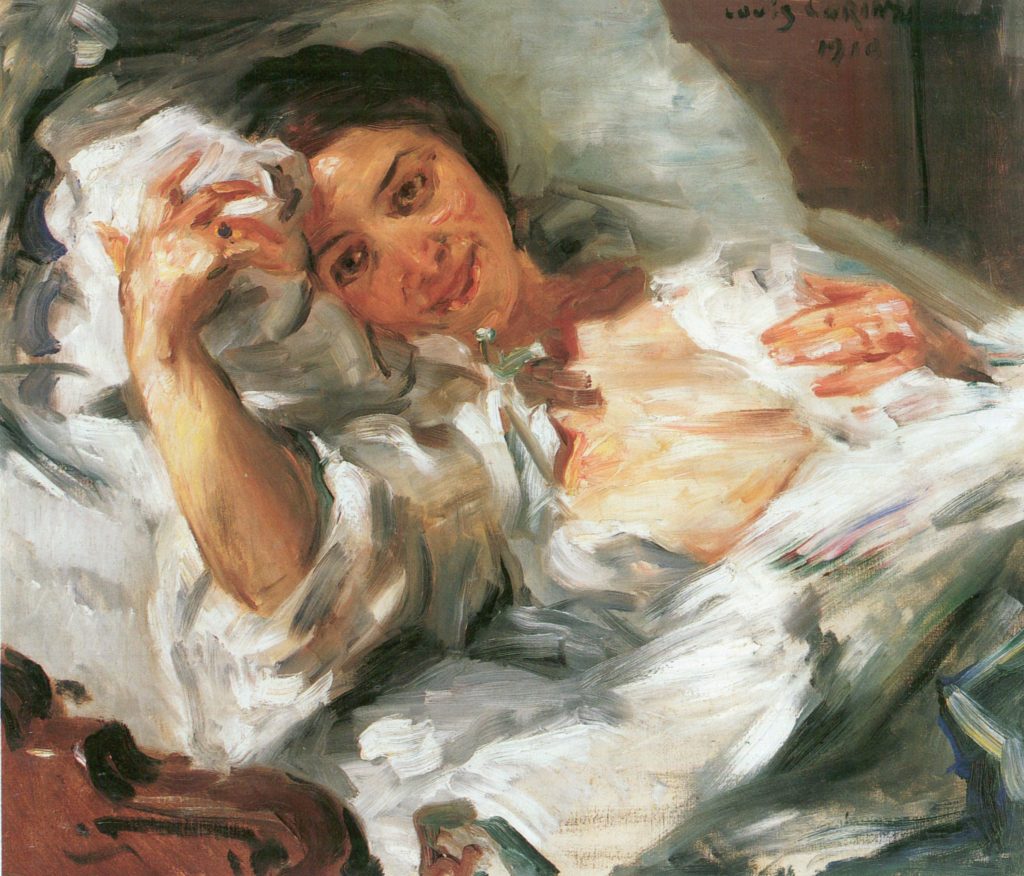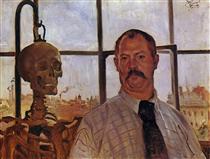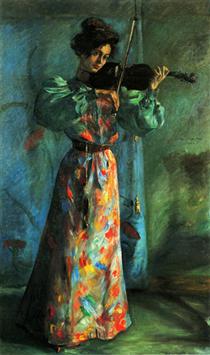Lovis Corinth was a Prussian painter born in 1858 to the name Franz Heinrich. He showed a proficiency for art from a young age, and studied it in post secondary. Shortly after graduation he moved to Munich, Germany which was a major centre for European art at the time. While many of the painters of the time fell into either the camp of impressionism or expressionism, Corinth straddled that line with his work.
When developing his painting style, Corinth was a naturalist and despised the loosey-goosey style of the expressionist movement, but later in his career his brush strokes became freer and he created his own style.
Due to his affinity for painting portraits, it is clear the influence painters like Courbet and Rubens had on him. While he had a large body of work, he was also a known alcoholic.
He took to teaching in 1900 when he moved to Berlin, and opened a painting school for women. He married a student who was 20 years younger than him at 23. They had two kids and his family became a muse for much of his work, reflected in his paintings in the latter half of his career, steering away from his young work on things like the female nude.
Corinth had a stroke in 1911, which left him partially paralyzed, in which he took a year-long sabbatical from painting. When he started again his paintings often featured snapshots of everyday life, showing his new-found appreciation for the little things.
Lovis Corinth has my favourite body of work of any of the artists we’ve covered so far, other than maybe John Singer Sargent. I admire his brush work, his subject matter and the way he uses lighting. I could stare at it all day.




